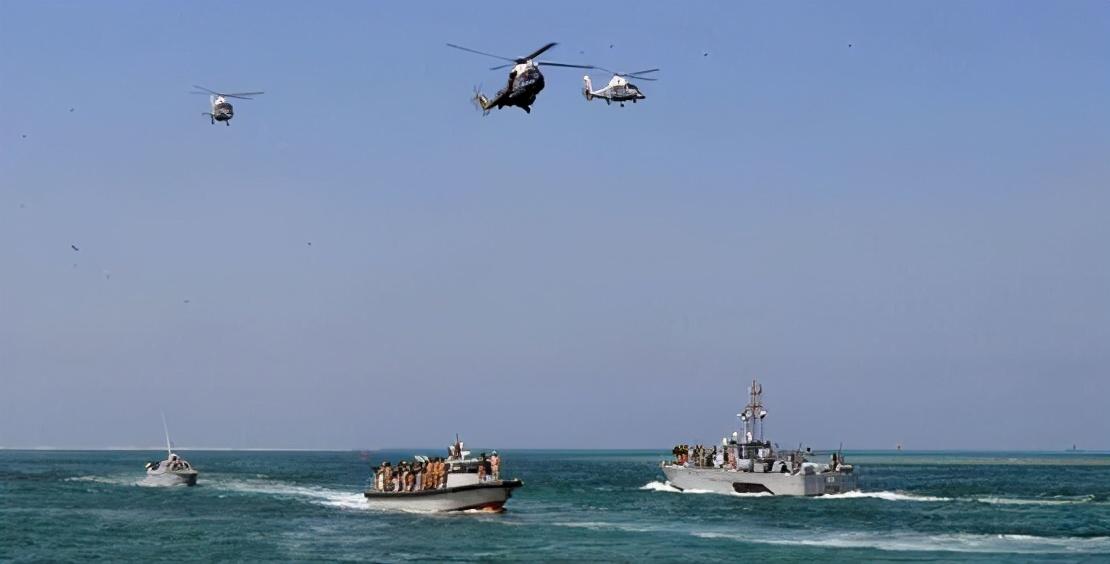World Wide Web reported on November 16 that according to the agreement signed between Russia and Sudan, Russia will establish a naval logistics center and repair shop in Sudan.
This new naval logistics center will maintain a garrison level of more than 300 people, and the construction of docks and maintenance facilities can maintain up to four different ships including nuclear-powered ships at one time.
This is the first time that the Russian Navy has returned to the Red Sea since the Soviet “Red Navy” withdrew from the Red Sea in 1977 and set up a logistics support base. This move is widely interpreted as a sign of the re-emergence of the Russian Navy.

Historically speaking, the Russian Navy and the Red Sea are still related. During the Cold War, the Soviet navy had a good relationship with the Siad Barre government in Somalia.
At the same time, the Barre government leased the “Port Berbera” on the coast of the Red Sea to the Soviet Navy as a common use for the Soviet Navy’s Mediterranean Squadron and the Indian Ocean Squadron. A foothold.
In 1977, in the Odenga War between Ethiopia and Somalia, the Soviet Union chose to support Ethiopia, which turned Somalia and the Soviet Union over. Then the Somali government took back the port of Berbera and drove away the local Soviet troops.
For 43 years since then, the Soviet/Russian navy has no place in the Red Sea. However, affected by the disintegration of the Soviet Union and the country’s economic recession, the Russian navy basically did nothing in the Red Sea.
Now that Russia suddenly signed an agreement with Sudan to lease the port of Sudan as the foothold of the Russian Navy in the Red Sea, there are probably the following considerations:
First of all, because the threat of Somali pirates has always existed, Russia, like other countries, has been sending warships to perform escort missions around the Gulf of Aden to ensure the safety of Russian routes to Asia.
However, Russia is different from other countries. Many countries, including my country, have set up logistic supply bases in the Gulf of Aden, especially Djibouti. However, Russia has never established its own logistic supply station in this area.
This led to Russian ships in the Gulf of Aden. Regional activities, whether in terms of the number of warships or escort capabilities, cannot be compared with other countries.
For the Russian army to establish a Red Sea logistics base in Sudan, the first consideration is to maintain the safety of maritime navigation in the entire Red Sea and the Gulf of Aden. Sudan has a larger land area than Djibouti and is far from the Mande Strait.
It is less politically sensitive. The establishment of a base here is relatively low-key, so it is convenient to carry out various maritime work.

Second, although Russia has a permanent naval base in Tartus, Syria, as a country around the Mediterranean, is still a considerable distance from the Persian Gulf. If Russia wants to influence the Middle East and expand its influence, it must Choose areas closer to the Persian Gulf to deploy military forces.
At present, the Russian Navy is unable to confront the U.S. Navy head-on, and Russia does not have enough power to seek naval bases in the Persian Gulf. In this case, setting up a logistics support center in the Red Sea is a good choice.
The new base in Sudan is located less than 2,000 kilometers away from Syria, and the sea route is less than 2,000 kilometers. It is very convenient for both sides to support each other.
This is for Russia. It is a pretty good choice, and the base is located in the Red Sea, Russia can also radiate its influence to the Arabian Peninsula and Africa at the same time, it can be said to kill two birds with one stone.
Objectively speaking, a small logistics support base of 300 people does not represent the rise of the Russian Navy, but it also shows that the Russian Navy is beginning to recover.
The layout of the Russian navy in the Red Sea is also good news for our country, because the Red Sea is narrow and the Mediterranean Sea is a little too far away from our country.
After the Chinese navy fleet deployed in the Gulf of Aden sent the merchant fleet across the Strait of Mande, the Russian fleet in the Red Sea can relay the escort for the merchant fleet, thus greatly improving the efficiency of escorting the passing ships, and when our country meets again When it comes to non-combat missions similar to the evacuation of overseas Chinese from Libya, the Russian navy deployed in the Red Sea can also provide us with support.
With the relationship between China and Russia, cooperation in escort and combating piracy is believed to be nothing.



